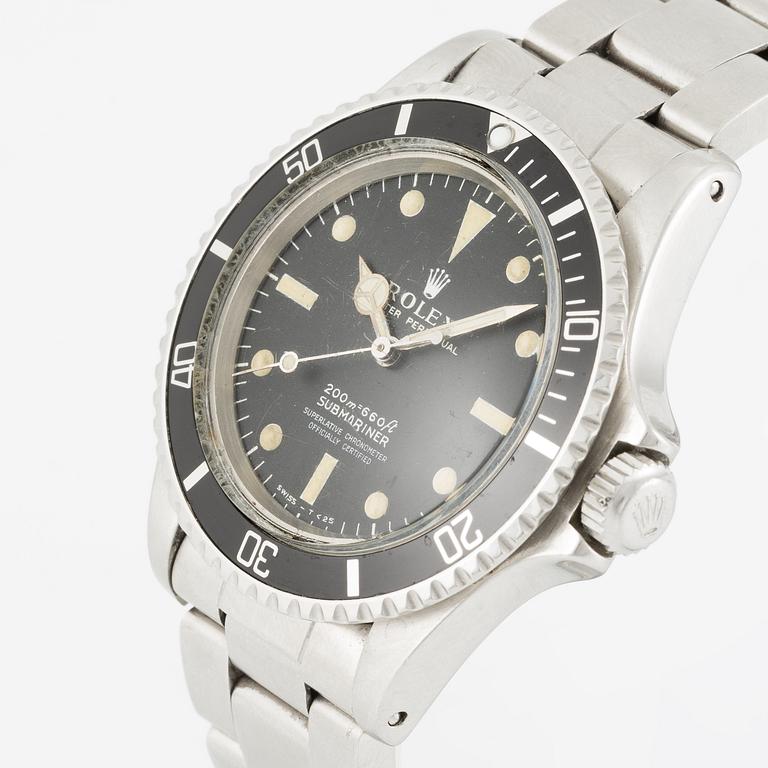Rolex, Submariner, "Matte Meters First", ca 1967.
Case size: 40 mm
Material: steel
Movement: automatic, caliber 1570 (ROW)
Year: circa 1967
Glass: plastic crystal
Bracelet: Oyster bracelet, folding clasp, ref. 93150-S U11/593
Reference number: 5512
Serial number: 1'546'190
Movement number: 47'190
Case number: 5513/VI.66
Only 17,338 examples of the reference 5512 were ever produced, (compared to 151,449 examples of the reference 5513.).
Folding clasp from circa 1998. Newer insert. Wear due to age and use.
The movement is running at the time of cataloguing, Bukowskis does not guarantee the future function of the movement. Please note that the movement has not been tested for timekeeping accuracy and may need a service at the buyer's expense. Watches have been opened to examine movements therefore no warranties are made that the watches are water-resistant. Potential buyers should inspect each watch to satisfy themselves as to condition. For more information, please read our Conditions of Purchase.
Alkuperä - Provenienssi
Same owner for the last approximately 30 years.
Muut tiedot
A Transitional Era – From Gilt to Matte Dials
The mid-to-late 1960s was a pivotal period in the evolution of the Rolex Submariner, as the brand transitioned from the earlier glossy gilt dials with gold lettering to the matte dials with white text that defined the later models. This shift marked a move towards a more modern, tool-watch aesthetic, reflecting the Submariner’s growing role as a professional dive watch.
One of the most notable changes during this period was the "meters first" depth rating, which appears as 200m = 660ft on the dial. This format was standard on Rolex dive watches until the late 1960s when the brand switched to "feet first" (660ft = 200m), likely to align with the preferences of the American market. As a result, "meters first" dials are rarer and are especially desirable among collectors, as they represent an important transitional phase in the Submariner’s history.
This particular watch features the Secondary Printing variation, a fascinating detail in Rolex’s dial production process. Unlike the "Neat Font" dials, where all text was printed at the same time, the "Superlative Chronometer Officially Certified" text on Secondary Printing dials was applied separately in a later printing phase.
This method often led to subtle variations in the ink texture, alignment, or spacing of the final text. Some examples exhibit slightly raised or uneven lettering, making each dial somewhat unique.
These small production inconsistencies add a layer of charm and individuality to each piece, making them particularly intriguing for vintage Rolex collectors who appreciate the nuances of dial printing techniques.
Powering this watch is the Rolex Caliber 1570, chronometer-certified movement introduced in the 1960s. This particular example is also signed 'ROW,' Rolex’s import code for the U.S. market.






























































